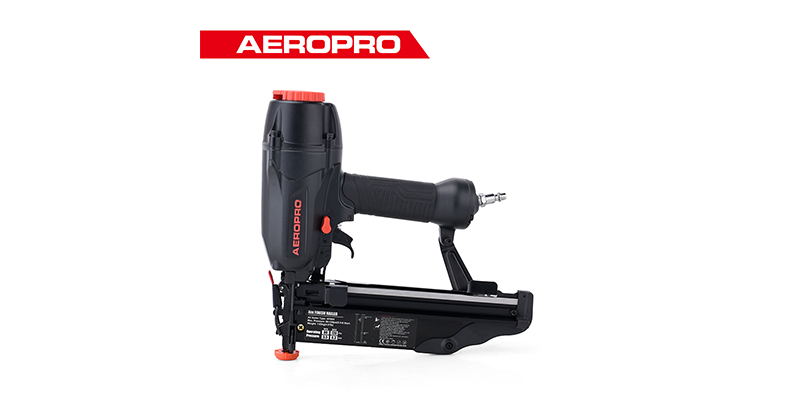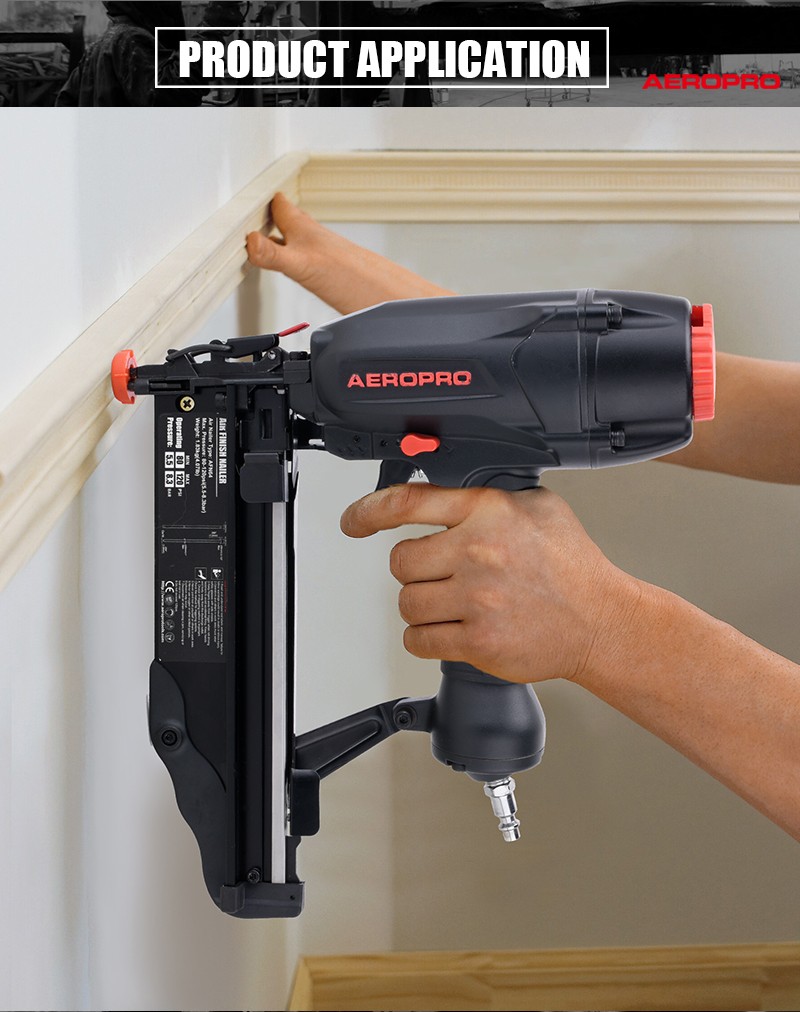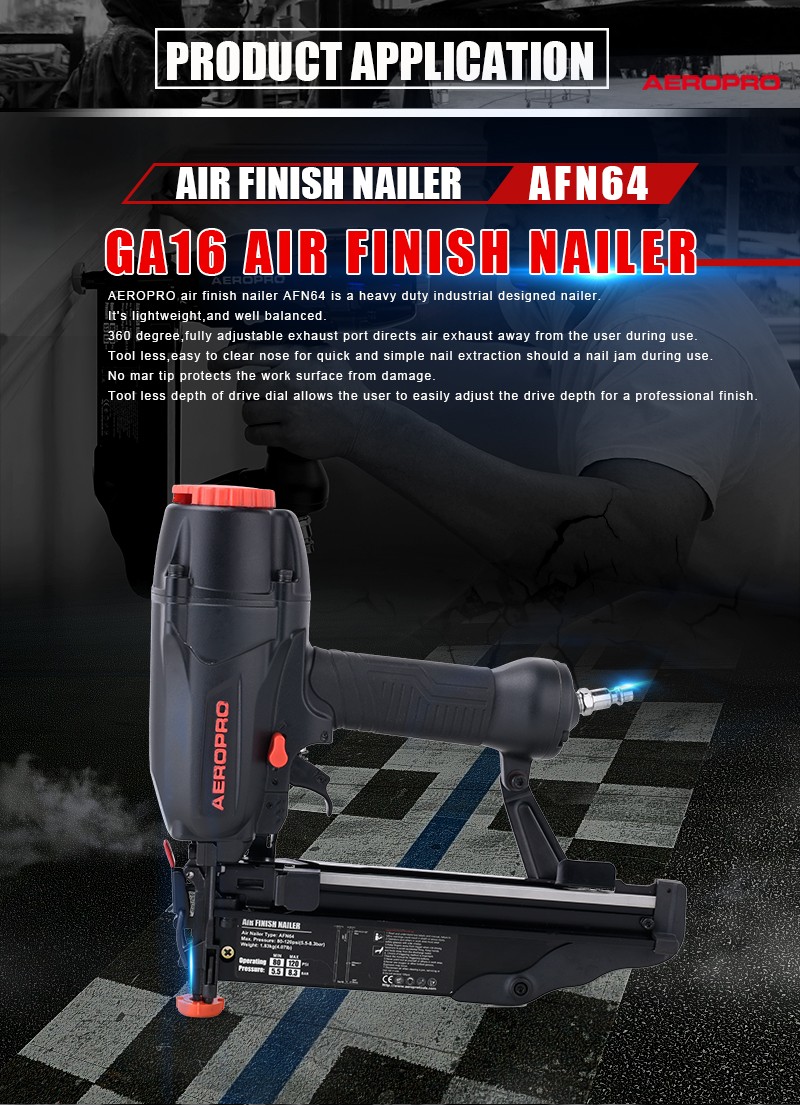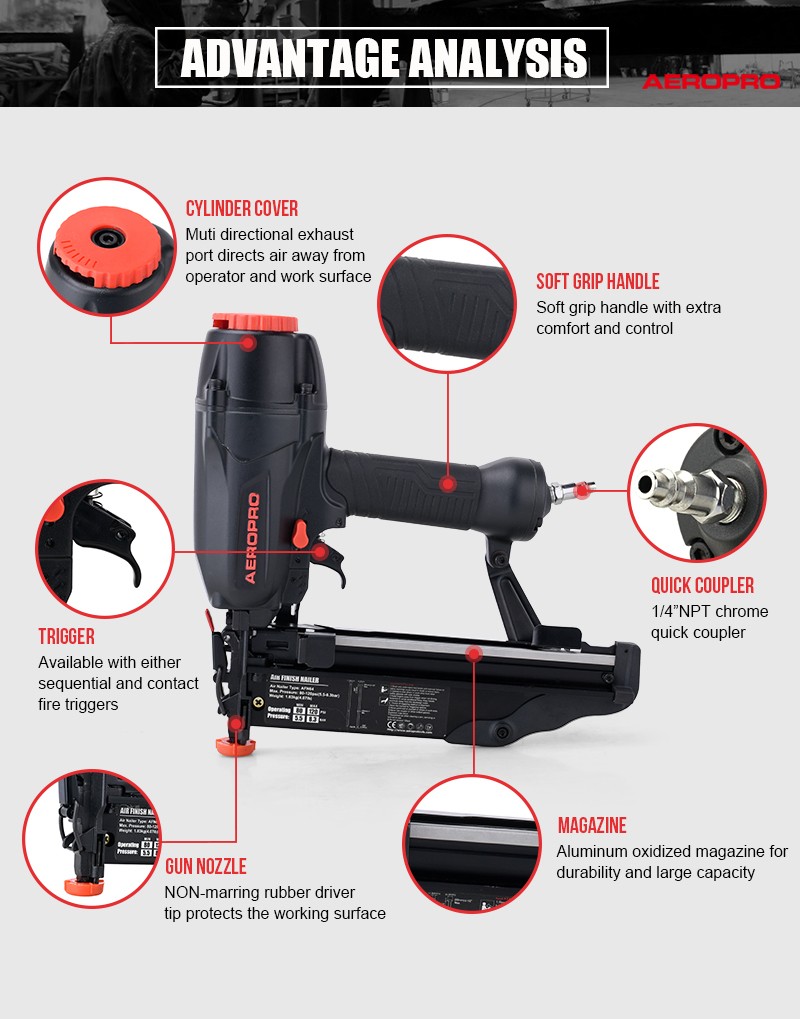
Unlike larger framing nailers designed for rough work, finish nailers are specialized for driving smaller gauge nails for delicate finish work. With some practice and know-how, a finish nailer can help any woodworker achieve great results.
Select The Right Nailer For The Job
Not all finish nailers are created equal. While they serve the same general purpose, there are models optimized for different uses. Consider what you'll be nailing before choosing a finish nailer.
Brad nailer. Designed for especially delicate projects. Uses tiny brads less than 1" long that are nearly invisible.
Straight nailer. Fires nails perpendicular to the nose, allowing you to get close to vertical surfaces. Great for baseboards.
Angled nailer. Fires at an angle, which provides more clearance around the nose. Helpful for nailing into tight corners.
No single nailer excels at everything, so select the variety best suited to your upcoming projects.
Use The Right Nails
You'll want nails specifically made for your finish nailer. They come in different diameters, heads, and lengths. Follow your tool's manual for the proper nails - using ones that are too thick or long can damage the nailer and your workpiece. The nails should slide smoothly through the magazine without jamming.
The most common sizes used are 1-1/4” and 1-1/2”. Use nail lengths approximately 1.5x the thickness of the material. Consider stainless steel or galvanized nails for outdoor projects.

Mind The Wood Grain
Wood direction impacts both the appearance and strength of nailed joints. Always nail perpendicular to the wood grain - fastening into end grain leaves a weaker connection that's more likely to loosen. Nailing into face grain keeps the joint tight.
Grain direction also influences how the wood will react to nailing. Face grain allows the wood fibers to compress smoothly under the nail, leaving a cleaner appearance. End grain tends to splinter more easily around the nail hole. Avoid nailing into end grain whenever possible.
It also helps to orient boards so the grain patterns match at joints. Alternating directions draws attention to the seams. Keeping the grain aligned delivers a seamless, uniform look.
Joint Nailing Techniques
For assembling joints, such as corners, miter joints, and T joints, there are some special techniques to use.
Butt Joints. Use alternating angled nails on each edge for maximum strength. Apply wood glue before nailing.
Miters. Nail perpendicular through the top piece into the edges of the adjoining piece. Spread nails evenly across the miter.
T Joints. Toenail nails at 45 degree angles across the joint for optimal holding. Stagger nails from opposite sides.
Surface Nailing. For attaching to surfaces like plywood, nail at intervals just inside the surface edge so nails don’t exit material.
Glue First For Added Strength
For critical joints, adhesives provide superior strength and durability compared to nails alone. Apply wood glue to all mating surfaces before nailing - the nails act as clamps while the glue fully cures.
This prevents the joint from gradually working loose over time. The adhesive also helps compensate for any spaces between nail holes. Follow the glue manufacturer's instructions for setup time before applying force to the joint.
Proper nailing technique maximizes the holding power of the nails. But adding glue creates a permanent, waterproof bond not reliant on fasteners alone. Use both methods together for professional results.

The AEROPRO AFN64 air finish nailer can help take your woodworking projects to the next level with strong results.
It has a heavy duty industrial designed. Aluminum oxidized magazine for durability and large capacity. 360 degree adjustable air deflector for appropriate air direction. Quick release nosepiece for fast clearing of jams Economical air consumption with low noise.
No mar tip protects the work surface from damage. Tool less depth of drive dial allows the user to easily adjust the drive depth for a professional finish.

Model No:AFN64
Fastener Details:25-65mm
Load Capacity:100pcs
Operating Pressure:80-120PSI(5.5-8.3bar)
Air inlet:1/4''(6.35mm)
Dimension:320x280x80mm
Weight:1.83kg(4.07lbs)
AEROPRO has quickly risen to become an unrivaled global producer of air-powered devices including air tools, air spray gun, air nailer, airless paint sprayer, and etc.
AEROPRO seeks independent sales agent to represent and market our industry-leading pneumatic tools. We support OEM, ODM, OBM customization, small order quantity is acceptable and samples are available.
Make any cooperation possible. Any services related to the product, inquire with us now! Sales@Aeroprotools.Com